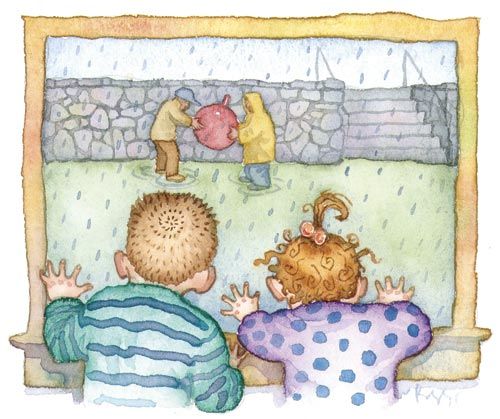The Flood
Great moments in building history: Flights on rainy nights are a bit of a downer

My partner and I had built an eight-unit town-house complex. The units were in a U-shaped configuration on a wide, busy street. All the units were below grade; after entering the driveway from the street, residents descended into a courtyard about 6 ft. below street level, where the garage entrances were located.
The courtyard had two drains. Below the grate, the drain went down about 21⁄2 ft. to a lateral that connected the two drains and extended to the main storm drain in the street.
The owners of five of the units had just moved in. It was late fall, with the rainy season upon us. One night, the forecast predicted a big rainstorm, and it was accurate: It rained cats and dogs all night. Early the next morning, I received a call from an irate homeowner who reported standing water in the courtyard and garages.
Fortunately, the rain had stopped. I raced to the project to assess the damage and could not believe what I saw. The courtyard contained about 2 ft. of standing water. The water had backed up into the garages and into some of the vehicles parked there. Just then, my partner showed up, and he was speechless; the city had engineered and approved the drain.
I called the engineer who had designed the drainage system and explained the situation. He came over immediately. We reviewed the drawings, and the engineer was adamant that the system was fine and that water must be backing up from the street into our drains and courtyard.
Over the course of the day, the water gradually receded through the drains, but the weather service was forecasting another heavy storm to hit the following evening. The engineer suggested that we plug the drain to the street, which might prevent water from backing up into the courtyard.
We arrived at the town houses around 5 p.m.; black storm clouds were gathering. When one of the homeowners came out to chat, we told him about our plan, and he offered to let us borrow an air compressor and a hippity-hop, an inflatable balloon-like toy that children bounce on. We would wedge the balloon into the drain and inflate it.
As I put the hippity-hop into the drain and started inflating it, the rain commenced. No, the pouring commenced. The balloon was tight in the drain as water started to flood the courtyard. No problem, we have this beat, I thought. After about 20 minutes of steady downpour, I noticed the hippity-hop starting to bulge out of the drain. “Better get in the drain and stand on that thing,” my partner shouted.
Even though the vertical area of the drain had filled with water, I climbed in and planted both feet firmly on the hippity-hop. After a few minutes, I felt it starting to squeeze out of the drain. Suddenly, it popped out. The pressure of the water from the street and the expansion of the hippity-hop forced me into the air; I came out of the drain like a missile out of a submarine and landed in the courtyard in a torrent of water. My partner and the homeowner found the situation pretty humorous, as did I, none the worse for wear from the ride. The courtyard was soon full of water, and we ended up having to carry some homeowners to the stairs of their units.
It rained all night, and the homeowners were not pleased. After appealing to the city for an investigation, they eventually ran a remote camera down the storm drain, and we discovered the source of the problem. It turned out that someone doing concrete work had gotten rid of excess concrete by pouring it down the storm-drain grate. We were able to repair the drain problem, and I didn’t have to take any more flights on rainy nights.
Drawing by: Jackie Rogers
Fine Homebuilding Recommended Products
Fine Homebuilding receives a commission for items purchased through links on this site, including Amazon Associates and other affiliate advertising programs.

Handy Heat Gun

8067 All-Weather Flashing Tape

Reliable Crimp Connectors


























